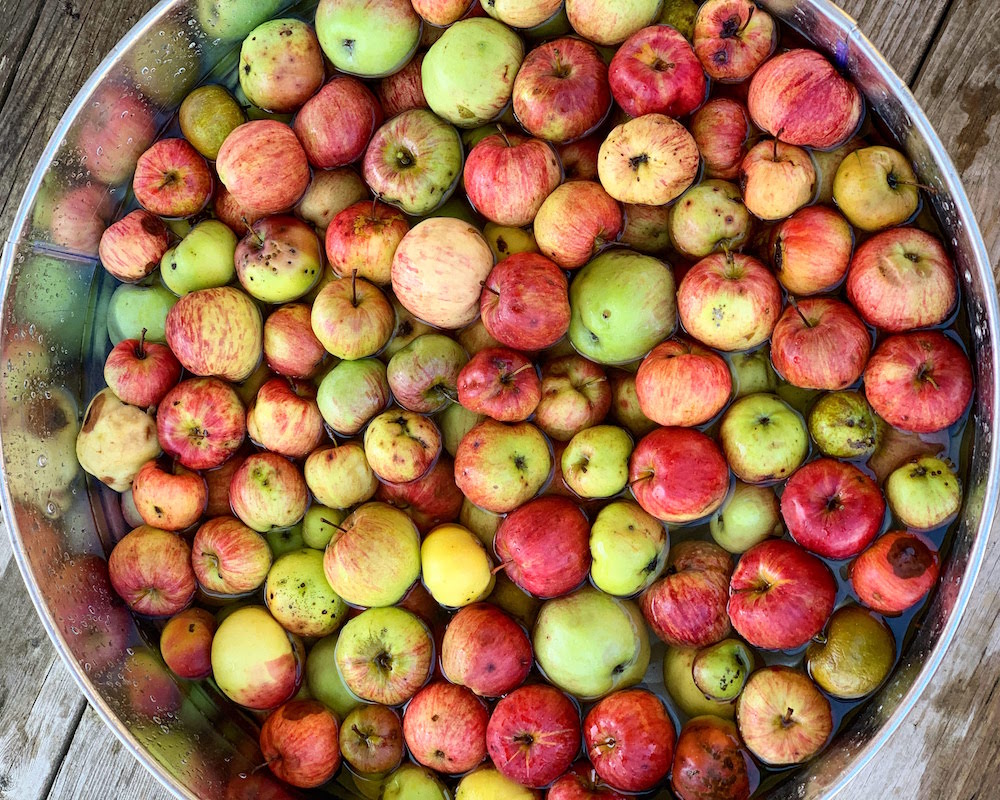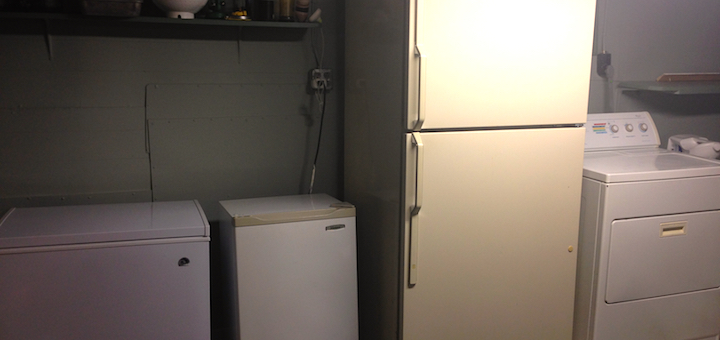Content warning: I am talking about some EXPLICIT credit card rewards today. There will be actual numbers, real percentages and even specific cards discussed. If you’re a person who doesn’t do well with credit cards, if cards encourage you to spend more than you can afford and go into debt, I want you to stop reading this article and instead go look at this panda who traded her baby for an apple… I mean, maybe it was a really good apple?

If you are like, YES, I too like apples and am a responsible credit card person, and I too want to earn money for using a credit card the right way, then read on! Your road to riches is below. Actually not riches, but perhaps $486.
My 2020 Cash Back Total
I made $486.36 in 2020 by using my cash back credit card. Is this a ton of money? No. But is this money that was really, really easy to earn? Yes, yes it is. Using a cash back credit card to buy stuff you’re going to buy anyway is one of the easiest, most straightforward ways to leverage your spending.
What is this I’m talking about? A cash back credit card returns a specified percentage of your total purchases to you every month. For example, if you use the American Express Cash Magnet® Card, you will get 1.5% of your spending on that card back every month. If you spent $1,000 on that card in the month of March 2021, you would get $15 back because 1.5% of $1,000 = $15.
So this is not your route to fabulous riches raining down on your head, but it is a super simple way to earn money when you buy the stuff of life (groceries, gas, doctor visit co-pays, chicken feed, wart remover… that got real specific there, Mrs. Frugalwoods… ).
Uh, at any rate, here’s the spreadsheet I made of how my cash back earnings broke down over the course of 2020. I used my Fidelity Rewards Visa card, which offers a flat 2% cash back on all purchases:
| 2020 Month | Amount Spent On Card by Frugalwoods | Cash back Earned (2%) |
| January | $2,346.52 | $46.93 |
| February | $1,969.73 | $39.39 |
| March | $2,483.86 | $49.67 |
| April | $1,091.80 | $21.84 |
| May | $1,418.78 | $28.36 |
| June | $1,599.88 | $31.99 |
| July | $1,347.97 | $26.96 |
| August | $1,045.13 | $20.90 |
| September | $2,610.48 | $52.21 |
| October | $2,688.63 | $53.77 |
| November | $4,032.01 | $80.64 |
| December | $1,684.90 | $33.70 |
| TOTAL: | $24,319.69 | $486.36 |
To be clear, this isn’t all of my 2020 spending, it’s just the spending I did with my cash back credit card. If you want to see all of my expenses in painful, granular detail, check out my Monthly Expense Reports.
Advertiser Disclosure: Frugalwoods partners with CardRatings for coverage of credit card products. Frugalwoods and CardRatings may receive a commission from card issuers at no extra cost to you. Here’s a boring (but important) explanation of how Frugalwoods makes money. The credit card links in this post are affiliate links.
Responsible Credit Card Usage

Before I write another word evangelizing the glory of cash back credit cards, I want to spend a moment outlining responsible credit card usage. Credit cards have a serious ability to be Dickensian: they can be the best of times or they can be the worst of times. This 100% depends on how you use them.
If you have a history of credit card debt and if you know that having one only prompts you to spend more than you can afford, go ahead and close this article. Don’t do something that won’t set you up for success.
Not using credit cards isn’t a failing, it’s an important element of knowing yourself and your financial proclivities.
Conversely, if you’re confident in your ability to use a credit card responsibly, it’s a fabulous way to earn something for nothing.
Here’s a quick checklist to ensure you’re doing it right:
When I Get a Credit Card:
- I will only buy things I was going to buy anyway.
- I will not view a credit card as carte blanche to buy whatever I want, knowing I can’t actually afford it.
- I will pay off my credit card balance in full and on time every month with no exceptions:
- It is 100% false that keeping a balance on your credit card improves your credit score. IT DOES NOT.
- What can improve your credit score is keeping a credit card open and FULLY paid off for many years.
- Paying your card off in full does not mean paying the “minimum amount due,” it means paying the full balance, such that your balance = $0 after you’ve made your payment.
- I will close my credit card account if I find that I cannot consistently adhere to the first three rules. I promise.
- Furthermore, I will not try to game the system by opening and closing a ton of different credit cards as I understand this can hurt my credit score.
- If I cannot do these things, I will not feel ashamed, I will feel empowered that I know myself. I will stop reading this article and will instead go look at this panda who traded her baby for an apple… I mean, maybe it was a really good apple?
How Do I Choose a Cash Back Card?

If you’ve taken the above quiz and feel confident in your ability to use credit cards responsibly and correctly, let’s get to it! Today I’m going to focus on cash back credit cards only, but the other type of credit card rewards are travel rewards, which I discuss in these posts:
- Travel Rewards, Flying With Two Toddlers, And A Free Hotel Stay
- The Best Credit Cards (and Credit Card Rewards!)
- The Frugalwoods Guide to a Simple, Yet Rewarding, Credit Card Experience
Back to the cash back: there are two basic types of cash back credit cards, those with categories and those without. A card with categories offers different cash back percentages on different types of purchases. A card without categories offers a flat cash back percentage regardless of the type of purchase. Let’s dig into some examples.
To Category or Not to Category
Choosing between “category” and “non-category” cash back cards totally depends on how active you want to be in tracking which credit card you use at any given time. “Categories” of cash back mean that a card offers different cash back percentages based on where you use it. Here’s a real-life example of how this can break down:
The American Express Blue Cash Everyday® Card offers a hierarchy of cash back percentages:
- 3% Cash Back at U.S. supermarkets (on up to $6,000 per year in purchases, then 1%)
- 2% Cash Back at U.S. gas stations and at select U.S. department stores
- 1% Cash Back on other purchases
- Earn $200 back if you spend $1,000 in in the first three months of having the card
- No annual fee
The advantage with this card is that 3% cash back is a really high percentage. However, you’d have to be cognizant of the $6k annual limit on the 3%. Plus, 1% is a really low cash-back percentage, so if you don’t buy a ton of groceries or gas, you’d end up getting a bad deal. On the other hand, if you know you spend at least $6k per year on groceries, that’d be a minimum of $180 in cash back every year (because 3% of $6,000 is $180), which is great!
Here are a few other category-specific cash back cards:

Capital One SavorOne Cash Rewards Credit Card:
- 3% cash back on dining and entertainment
- 3% at grocery stores (excluding superstores like Walmart® and Target®)
- 1% on all other purchases
- Cash back won’t expire for the life of the account; no limit to how much you can earn
- Earn a one-time $200 cash bonus after you spend $1,000 on purchases within the first 3 months from account opening
- No annual fee
- 5% cash back on travel purchased through Chase
- 3% on dining at restaurants and drugstores
- 1.5% on all other purchases
- No annual fee
- No minimum to redeem for cash back, rewards do not expire as long as your account is open
- Earn $200 if you spend $500 in your first 3 months from account opening
Rotating Categories: The Next Level
If you’re super organized and want to really rack up cash back offers, there are a number of cards that feature rotating categories of cash back. What this means is that the percentage they offer for certain types of purchases changes throughout the year. This requires judicious tracking, but if you’re up to it, you can earn as much as 5% cash back, which is–I think–about the highest you can go on cards without an annual fee (more on those in a moment).
Here are a few cards with rotating categories:

- 5% cash back on up to $1,500 in combined purchases in bonus categories each quarter you activate with new 5% categories each quarter
- 5% on travel purchased through Chase
- 3% on dining at restaurants and drugstores
- 1% on all other purchases
- No minimum to redeem for cash back. Cash Back rewards do not expire as long as your account is open.
- Earn $200 if you spend $500 in your first 3 months from account opening
- No annual fee
U.S. Bank Altitude® Go Visa Signature® Card:
- Earn 4X points on takeout, food delivery and dining
- Earn 2X points at grocery stores, grocery delivery, gas stations and on streaming services ($15 credit for annual streaming service purchases such as Netflix and Spotify)
- 1X point per $1 on all other eligible purchases
- Earn 20,000 bonus points when you spend $1,000 in eligible purchases within the first 90 days of account opening. That’s a $200 value redeemable towards merchandise, gift cards, cash back, travel and more
- No annual fee, points never expire
What this boils down to is knowing your spending habits and your personal preference for using multiple credit cards.
I’ve heard from savvy readers that they put sticky notes on their credit cards to remind them of the cash back categories. So, for example, they’d only use their American Express Blue Cash Everyday® Card at the grocery store and the gas station and they’d toggle to their Chase Freedom Flex℠ for restaurants and then would use their Capital One Quicksilver Cash Rewards Credit Card for all other purchases.
This is a totally awesome system and works really well if you’re super organized and don’t mind putting little notes on your credit cards. If you are more like me and often need to sort of toss your wallet in the direction of the cashier while one or both of your children attempt to scale your body, you may be better off with a card that offers a flat cash back percentage.
Category-Free Flat Cash Back Percentage Cards (aka the easiest to use)
The benefit of a category-free cash back card is that you don’t have to keep track of varying cash back percentages. It’s the same percentage back no matter where you use it or how much (or how little) you spend on the card. This is handy if you want to set it and forget it. You get the card, you start using it and you get money back. It’s the absolute easiest way to earn credit card rewards. The downside is that category-free cards usually offer a lower cash back percentage.
Here are a few examples of category-free, flat cash back percentage cards, which by the way, have no annual fee. You definitely shouldn’t pay an annual fee for a straightforward, category-free cash back card.
American Express Cash Magnet® Card:
- Unlimited 1.5% cash back on all purchases.
- Earn a $150 statement credit after you spend $1,000 or more in purchases within the first three months of card membership

Capital One Quicksilver Cash Rewards Credit Card:
- Unlimited 1.5% cash back on all purchases
- Earn $200 if you spend $500 or more in purchases within the first three months of card membership
Should I Pay An Annual Fee?

Probably not and most cash back cards don’t have an annual fee. However, if you do the math and calculate that an annual fee is worth it based on your spending patterns, there are indeed higher rewards to be had on cards with annual fees, such as the:
American Express Blue Cash Preferred® Card:
- 6% Cash Back at U.S. supermarkets on up to $6,000 per year in purchases (then 1%)
- 6% Cash Back on select U.S. streaming subscriptions
- 3% Cash Back at U.S. gas stations and on transit (including taxis/rideshare, parking, tolls, trains, buses and more)
- 1% Cash Back on other purchases
- Earn a $300 statement credit after you spend $3,000 in purchases on your new Card within the first 6 months
- Cash Back is received in the form of Reward Dollars that can be redeemed as a statement credit
- $0 introductory annual fee for one year, then $95
The obvious advantages here are the 6% cash back opportunities. If you spent $6k on groceries in a year, you’d get $360 back, which on its own would more than legitimize the $95 annual fee.
However, if you aren’t mindful of the categories on this card and–crucially–if most of your spending doesn’t fall under supermarkets, streaming subscriptions or gas stations/transit, you’d be relegated to 1% cash back, which would likely make the $95 fee a bad deal. But I have to say, the 6% cash back on grocery stores is very appealing to me since we definitely spend more than $6,000 a year to feed our family.
To Use a Credit Card Effectively, You Have To Track Your Spending
Oh my goodness, Mrs. Frugalwoods, are you seriously going to tell us AGAIN that we have to track our spending?! Yes, yes I am. I am the mosquito in your ear that can’t stop, won’t stop reminding you to TRACK YOUR SPENDING.

What you spend forms a crucial basis for how you manage your money. People love to talk about income, which is cool and very important, etc, but it means nothing if you spend it all. If you make $500k per year and spend $500k per year, you have a net worth of $0, whereas if you make $100k a year and save half of it, you have $50k in the bank! Just saying.
Knowing what you spend is important in the context of credit cards because it will help you calibrate which type of card is going to deliver maximum rewards.
As you all know, I use and recommend the FREE expense tracking system from Personal Capital (affiliate link). I like Personal Capital because they don’t just do expense tracking, they offer a slew of other insights into your overall financial picture. I wrote this post explaining how in case you’d like to learn more.
In Conclusion:
- Do not trade your baby for an apple (looking at pandas everywhere… )
- Do not get a credit card if you know you won’t be able to pay the bill in full and on time every month
- Do get a cash back credit card that matches your spending patterns and propensity for organization
- Do reap the rewards of responsible credit card usage. And then tell me about it because I love nothing better than a feel-good credit card rewards story.
Advertiser Disclosure: Frugalwoods partners with CardRatings for coverage of credit card products. Frugalwoods and CardRatings may receive a commission from card issuers at no extra cost to you.
Editorial Disclosure: Opinions, reviews, analyses and recommendations are the author’s alone, and have not been reviewed, endorsed or approved by any of these entities.








I use a PC MasterCard (it’s a Canadian thing) which, because it combines credit card and store rewards, ends up giving me something like 6% back overall, probably more. And it’ll be even more since I purchased a membership to the same points program which gives me 10% back on store brand products, which we buy a lot of (and free curbside grocery pickup, which will mostly pay for the membership).
The rewards can only be spent at stores under the card’s umbrella, but because that’s the only place we grocery shop, it includes our local drug store as well, and they’ve got an increasingly diverse online store, it makes sense for us. Especially when they do “redeem $200 worth of points to purchase $300 worth of stuff” events, which happen a few times a year.
Same here, love my free groceries! Also have a visa: I use the points to pay down my mortgage principle on our rental property.
PC points here too! (Vancouver, Canada). The points add up so quickly for us I love it.
We also have the PC Mastercard, which we combine with the Optimum app. We’d shop at those grocery stores anyway as they’re local to us. It is ridiculous how quickly the rewards add up!
PC Mastercard user here too, I love it!
Quick question for the frugalwoods nation: we are looking to buy a new-to-us car (we know better than to buy a new one from other frugalwood articles ☺️). Would it be worth putting the car on a credit card and paying it off in full right away? We have the money saved to pay the car in full so we could pay it off. But I thought maybe we could earn some cash back. Although if it’s only $120 or something it might not be worth the hassle….
Unfortunately, most car dealerships only let you put up to 5k on the card because of the CC processing fees. But I did put that 5k on the card for cashback!
Car dealers in my area limit credit cards to $10k because of the swipe fees they pay, so if you’re just getting a few percent back it may not be worth the hassle.
We got a new card with a high minimum spend for a big points reward last time we bought a car. Got us like $1k worth of points and we thought it was absolutely worth it.
We got a used car and put as much on our credit card as we could to get the cash back! But I think it was a limited amount only up to $3,000. Then the rest we had to pay with a check.
No experience with a car, but my sister (who was then in late stage terminal cancer) pre-planned her funeral and paid for the whole thing in her cash back card. She figured it was one of her last best card uses! Generally it just depends on the business with which you are dealing and their card policy.
Yes, as much as they’ll allow you. This is also a great way to meet a minimum spend if you want to open a travel card.
My aunt did this as much as they would allow her. She then financed the rest at 0% APR for credit purposes and paid it the next day.
I have an Amazon Prime Rewards Visa Signature Card that pays me 5% back when I use it at Amazon and Whole Foods.
I only use that at Amazon and Whole Foods and it gets paid in full every month.
OK, most people don’t say “Whole Foods” and “frugal” in the same sentence but those vegan chocolate chip cookies are hard to say “no” to!
I have another card that pays 2% back on everything (which also gets paid in full every month). Between the two cards, I easily put $25-30 back in my pocket every month. And I can also get the rewards in cash if I want.
I have a REI card too (for the rare occasion that I actually buy something there; they tend to be a bit pricey).
Finally, the upgraded membership option at warehouse stores (e.g. Costco) can also be a good deal if you shop there a lot. I do, so the extra cash back usually pays for itself. That’s another option to consider if you spend a lot of money there.
Yes, be responsible, but if you are, it’s basically free money!
I do exactly the same thing. Prime Visa for Amazon/Whole foods, Costco card for Costco/gas station/Restaurants, Citi double for rest everything for 2%
YESS. Fellow Amazon and Costco card holder here. I also have the Walmart card because I use their grocery pickup. It gives 5% back. Everything gets paid off every month and we move our cash back into a “fun account” and use it to buy things that aren’t in the budget. Last year we were able to upgrade our TV.
I have a basic Bank of America Cash Rewards card I’ve had for a few years now. 1% back on most purchases, 3% back on a category of your choice. I really like the suggestions here.
One other card I have that I’d like to mention – we had planned to get married in 2020, but instead are getting married in a couple of weeks (!). I had been getting lots of bonus offers for the Delta SkyMiles Amex, and in late 2019 I pulled the trigger. The enrollment bonus was 70,000 SkyMiles; I paid $50 in annual fee the first year and $95 this last renewal. I tried to get a retention offer to offset the annual fee, but to no avail.
With those 70,000 miles, I’ve paid for wedding and honeymoon flights for both of us (six flights total), my bachelorette trip, and my fare to my fiance’s brother’s wedding. I would estimate that’s at least $1,200-$1,500 in flights I got for free* as well as a free checked bag for each traveler (i.e. one if I travel alone, two of my fiance comes with me), which is another $40-$80 per flight.
*I say “free” because, even though I’ve paid $150 in annual fees, Amex has offset that with other non-travel card perks. Last year I got $10 off a $10 purchase at a small business each month, this year I get $10 back per month if I spend $10 in combined purchases at a restaurant (basically three coffee runs per month, for a whole year).
I’m not sure if I’ll continue to pay the $95 when I renew, or downgrade to the Blue card (which is free). I’ll fish for a retention offer again, and see what they have to offer.
I use my Quicksilver and US Bank cards to rack up cash all year and redeem it for Xmas spending–and then spend only that. And I use my American Airlines Aviator card for travel points (we are currently working on a trip to Italy to visit kid and grandkids stationed there and totally unreachable since COVID). But I pay them all off each month and only buy what I would anyway. The family knows the plan–and my husband will often trade me cash for using the card for his individual purchases to bump the cash balance (we realized very early on our money management practices are too different to peacefully share finances jointly). It works. If you can stay on top of it, it really works.
Cripes we are a mess! We have an AA Mastercard that’s 80.00 a year and we get points to fly. It came in handy for a trip to UK 4 years ago , but with pandemic not so much . I’m thinking cash back is far better and just shop any airline trips. We sadly have like 10k on it now…when we sell the rental home we will pay off all debt ( home equity 100k) ( bridge loan 160) and CC… we’ll have some cash to buy a 2nd investment or that lil house in the woods..)
Love VT & Love Frugal woods…. I like to see how you guys use your rental in Boston to help make your woodsy home work. We have 2 girls going to college this Fall and need to work toward the ‘Old homestead near the sea’
actually maybe I need to submit us for a Frugal evaluation! we are 59 & 58 YO’s that will be empty nesters in the Fall and we are freaking on that prospect!
Great article! I love my Costco Capital One card, it doubles as my Costco membership card and they let me have a second one for my husband with no additional fee. We got about $500 last year in cash back because we put most of our (very frugal) wedding on it and about $300 most other years. The coupon can be exchanged for actual cash at any Costco or used there for purchases. Like 1kg bags of Cadbury mini eggs. Just throwing ideas out there.
I have nearly $400 in certificates from Costco sitting on my desk right now.
Some Pro Tips: Do NOT spend them for merchandise. Cash them out at Costco! Otherwise, the things you buy with the cash won’t earn a rebate. In my area, the Costco CC issuer is Citi Bank, not Capital One. IIRC, the Citibank checks are issued twice a year (not sure how C-1 works). Costco is 100% prepared for this. If the cashier has enough money in their drawer, they’ll gladly do it. There is also typically a checkstand set up to handle this during the first few weeks the checks come out. Otherwise, Member Services will cash them with zero hassle.
The Costco certificate came with a letter that, for the first time, says it “Must be redeemed for merchandise.” My Costco source says it’s partially in response to pressure from the IRS*. The thing to know is that you can use your Costco Membership Reward Gift Certificate to purchase A Single Item with the certificate and then your cashier will cheerfully give you the remainder in cold, hard cash. Put that cash in your pocket and buy everything else in your cart with your Costco CC. (Obeying all of Mrs. FW’s caveats, of course.)
This has been a Public Service Announcement for all my frugal, Costco-lovin’ friends.
*To the surprise of none, the IRS is looking for ways to treat these rebates as taxable income. Requiring the check be spent for merchandise is apparently a compromise, but Costco will still give you the cash back, because they have no system for people to use partial checks.
Thanks for sharing this! I have a certificate waiting to be used.
We use the Fidelity rewards visa 2% and I transfer the rewards into our investment account and invest it in index funds. 🙂
I love my Amazon Chase card! If you shop on Amazon a lot, it provides great cash back~ 5% on every Amazon purchase. 1.5% on everything else. Since I purchase supplements, household goods and dog & cat supplies (food, chews, treats, litter, supplements) on Amazon, this is a great deal for me.
Amazon is expensive for a lot of things so you might not be saving anything. I think most started with lower prices and the convenience but a lot of things can be found cheaper elsewhere. I rarely buy things from Amazon because I find the items I need/want elsewhere.
Amazon is often more expensive that Walmart/ the grocery store, but I live in a rural area so Amazon is our go to for a lot of things (especially things that aren’t strictly necessary). It may be a little more than in the city stores, but I don’t have to spend the gas money and time so it works out well for us.
I have the Citi Double Cash Back Mastercard, which pays me 1% per purchase, 1% per payment. I run a lot of things through it to get cash back. I even found a handyman who takes credit card payments, so I’ve had some serious cash back — almost $200 back in just two months of getting work done on the house. No annual fee, of course. They offer a flex pay option on certain (larger) purchases, but I haven’t used that so can’t tell you how that works as far as interest on the flex pay items. From my cursory reading of flex pay, it’s basically a payment plan.
Only I have a credit card. My husband is the kind to have a “free money!” mindset when he uses a card. Knowing this, he has given up all credit card use, and I heartily concurred. Credit cards — for some, the apple might be a better choice.
The question I have about cash back cards is who is ultimately paying for these “rewards”? Certainly it is not out of the goodness of the credit card companies. Is it the small business, who increases their prices just just to make up for the higher bank costs incurred? Most likely, the larger businesses are already charging you more for this reward? I don’t know the answer to my question, if someone does, please share. My concern is that we are ultimately paying for these rewards with higher prices. So, are they worth it?
The credit cards do charge the businesses fees (a percentage of each transaction). We are paying for these rewards with higher prices for sure but there is no way to get around it with most transactions. I have negotiated cash sale deals for instance with I got a new AC unit the guy took credit. I asked if I paid cash would he give me 2% off and he agreed. Going to do the same with a car. I bought a car on a credit card to get the percentage back and paid it off right away. If they were willing to negotiate a cash deal regarding that fee I would have opted for that.
There was an excellent (and very long) piece in the New York Times a couple months ago by Jamie Keiles that investigates this. Basically, bottom line is, cash users are subsidizing the credit card users.
Found it. Thank you.
🤣 just…thank you. for permission to choose a panda video over crunching numbers. it’s a heavy lift for the fatally-math-challenged among us. LOVE your blog and book!
I love reading your blogs, straight and to the point. Keep writing! I have been reading your post’s since I read your book. Awesome!
While I’m all for using rewards cards responsibly and do just that, the card issuers don’t cover the cost – they pass it on to the merchants. So I will cheerfully use rewards cards for purchases from large and often soulless corporations that can easily eat the cost, as well as at any merchant who states up front they prefer credit cards (e.g., to avoid having lots of cash in the store tempting robbers) or who prefer it for online transactions (e.g., our heating oil company). For small/independent/favorite vendors such as a farm stand or crafter, I’ll pay cash so they don’t get hit with the fee.
(Similarly, if we eat at a big chain restaurant like in the Before Times, I might pay the bill with a credit card but leave the waitstaff’s tip in cash. I was told that if a customer does not indicate a tip on a credit card payment, the restaurant figures their tip at 10% of the bill. This way the waitstaff gets the 10% tip from the restaurant along with whatever cash I gave them.)
Regarding credit card use, my explanation is simple: never treat it as a “credit” card, meaning you’ve been given a loan to pay back over time, instead use it as a “charge” card, meaning it’s a method of payment rather than an extension of money, and the bill has to be paid in full each month. This mindset shift took me from perpetual balances on my credit cards to near $0 (paying off the last one by mid-2021) and a credit score a good 200 points higher than it used to be. I note that I have privilege by not losing my employment/income stream during the pandemic.
Actually that might be a good topic: the mindset of using credit cards to avoid racking up debt. Not necessarily techniques but rather how did people make the mindset shift from credit card debt being as normal as breathing to avoiding it like the plague.
We contribute to several local charities and all of them have the option to add on X amount of dollars to cover the credit card processing fees that they have to pay.
We were SO excited to pay for a car on our card for travel points! But, maxed out at $5000 from the car company…but it was still worth it. Ran home same day and paid the card off – that felt GREAT.
I use a Citi Cash card which offers a flat 2% cash back on everything (half when you buy, half when you pay off, but effectively 2% since I always pay in full monthly). I love using one card and not trying to bounce back and forth between different cards offering different things. That sounds exhausting!
I use Discover 5% Quarterly Categories : Apr-Jun Gas stations, Wholesale Clubs, Select Streaming Services, Jul-Sep Restaurants and PayPal, Oct-Dec Amazon.com, Walmart.com and Target.com. Jan-Mar this year is Grocery Stores, Walgreens and CVS. No membership fees and rewards can be used at Amazon.com.
I have the American Express Blue Cash Preferred because our annual groceries clock in at almost exactly 6000 per year, so the 95 dollars per year is worth it for me. I also have the Chase Freedom which I only use for the 5 percent categories, and everything else goes on the Chase Freedom Unlimited. I’ve been eyeing the Sapphire Preferred or Reserve for travel because I can’t wait to go somewhere again…
I work in the financial sector. I think cash back/rewards cards should be banned. The interchange fees are built into prices – whether you pay by cash, check, debit, or credit. I will use a CC (and have the full amount auto-debited from checking every month – dumped the buyer of a previous CC issuer that would only auto-debit minimum). I only use a CC at public/private corporations, never at a local/true small business.
I loved this post – and thank you so much for sharing 🙂
You’re absolutely right in that one should never obtain a credit card if one is not able to pay off the credit card in full, each month. There is a reason why credit cards are often free… and if there is something that I’ve learned – it’s that there is no such thing as a free lunch. Cashback certainly is a nice benefit – if you pay off your credit cards and don’t overspend to get that cashback. It’s always a delicate balance.
Thanks for sharing!
Cheers,
Fiona
UK banks are a whole lot less generous ! I’ve had a card for some years now – it’s been pared right back – to 1% on supermarket shops and •5% on everything else. It also costs £2 a month. However – still managed to make £130 in the past year – less the £24 charges. As you say – it’s kind of free money. 😊
I don’t have the patience for switching between cards—everything goes on our Capital One Ventures, and we get 2% cash back on everything (in non COVID times you have to redeem the points against “travel” expenditures, but that’s a huge category and we’ve never had a problem). If you calculate the difference between what we get back on that and what we would get back on the no annual fee version of the card, we get way more back than the cost of the fee.
Will a cash-back card let you pay property taxes with it?
I have a PC optimum mastercard and a costco capital one card. I use to love the old optimum card I use to get over 1,000 cash back a year in points. Now I only get with the new system 350 to 400 back a year. So we only use it now when we shop at shoppers on bonus days or at the Atlantic superstore. We now mostly use our costco capital one card. Last year we got close to 400 back this year we should get more because we are both using it. I originally got the capital one costco card because it gave an extended warranty on my hearing aids and appliances we bought there. I believe it gives 3% back for restaurants and 2% for gas and 1% for everything else. The thing that sucks though is here in nova scotia most of the gas stations are fuel purpose so they list themselves as grocery so I dont get 2% back on gas. I will remember next time just to buy one item with the cash back and get cash with the remainder. Didn’t think about not getting % back on those purchases. Thanks for the tip. We dont pay for our costco membership my work does so any money I get back is win win. I will be buying a motorcycle soon and I am going to see if I can put at least 5000 on my credit card to get % back. I have been tracking my spending so I may change from capital one costco card to the other capital one card mentioned in the article. Such an informative post. Especially if you are going to buy anyway you might s well get something for it.
Hello. You will likely never read this but I left a not-so-nice comment a few years ago on one of your posts (couldn’t even tell you what it was at this point). I just wanted to drop back in and apologize. I’m sorry.
Wait… You bought chicken feed?? Did I miss the news?
You forgot the DoubleCash card from Citi – 2% on everything.
We paid for our honeymoon on credit card signup bonuses/points! So easy to do since we put our wedding expenses on credit cards (and paid them off every month). We had a 10 day road trip through New England, and barely paid for a thing!
Hubby and I both use one personnal credit card, both PC Mastercards, and we use it for all that can be put on it and we pay it in full each month. It must give us about 600$\year of free groceries, and it has no annual fees. So it really IS free money!
I decided to leave big banks and thought I would be stuck with lower cash back. But no, now I use Alliant Credit Union’s Platinum Rewards Visa which pays 2% cash back on everything. Currently, you can earn 5000 reward points (worth $50) if you spend at least $500 during the first 90 days.
Anyone can become a member by paying a one-time $5 membership fee to Alliant’s partner charity, Foster Care To Success.
More information is here: https://www.alliantcreditunion.org/bank/visa-platinum-rewards-card
I have a card that I pay the $95 annual fee for – it offered a $500 sign-on bonus, paid for my TSA pre-check, and offers pretty decent rewards for traveling. I have considered getting rid of this card since I haven’t been able to travel over the last year, but I am holding out hopes that it will soon return (and I am due to renew my TSA pre-check).
I do urge you to look at the other benefits some of these cards offer and whether or not you will use them. Some of them really do pay for themselves (especially airline/hotel cards if you travel a decent bit).
Cash back credit cards. No monthly fees. America does have some nice bits, then. In our low country on the other side of the pond, I cannot find a card without a montly fee, let alone a cash back. How lucky you are!
Though this does save me the hassle of choosing the right one.
(In this country most people buy with de debit card of their bank. Online one needs a credit card for foreign purchases, within the country banks offer a good online payment system, free of charge)
I have used my Chase credit card for years. But today, I was listening to an interview with Paul Greenberg who wrote The Climate Diet: 50 Simple Ways to Trim Your Carbon Footprint, and he pointed out that one of the ways we can improve our carbon footprint is by supporting banks and credit cards that are dedicated to green practices. Many of these big credit companies, including my Chase CC are contributing to climate change.
This article is worth a read:
https://www.greenamerica.org/green-living/responsible-credit-cards
I’m looking into switching to a Green America card. Would love to know if anyone else has done the same. Thanks!
Do you switch the cash back card you use frequently when you see a better deal? Should you leave the old accounts open? What are the best practices?
Do you have advice for someone who is looking to use a CC again? I haven’t had one in years and would like to build up controlled usage slowly to encourage a higher credit score. I cut all CC’s off years ago when I was spending too much. Really enjoying your tips. Thanks.
My husband and I use our Chase Sapphire exclusively for everything we buy. We pay off the balance each month. In 7 years we’ve amassed 600,000 points. We’re saving it for a trip to Italy. If we use our points to book our trip through Chase, we get 25% more value equal to $7500 in travel credit. If we need money before then, we can redeem points for cash instead
Looking for advice for tracking CC spending. Ultimately, my question is: can Personal Capital make it (relatively) easy to categorize and track transactions if just about everything goes on a CC each month? I currently use Simplifi and it pulls in my monthly CC payment as one massive transfer and then I need to manually split that one transaction into dozens and dozens of individual expenses, which are then categorized correctly but don’t have a merchant’s name attached unless I manually insert a note. It’s labor-intensive and I find myself putting it off, which is counterproductive. I’d consider switching to Personal Capital, but not if it requires that same level of monthly work. Any advice is appreciated. I used to track on a spreadsheet, so a software program feels mildly better but not great.